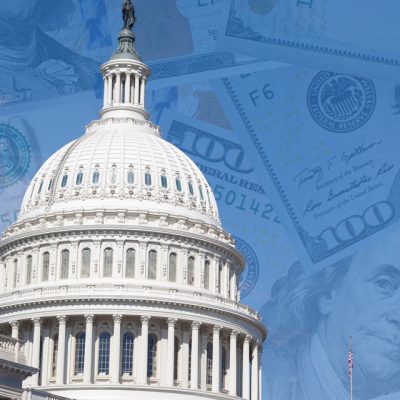What will happen to the U.S. health care system if Joe Biden becomes president? Biden will face the same health care delivery and health finance policy gameboard that President Donald Trump faces now: He will have to get any major health policy legislation through the House, and then through the Senate. Under current Senate rules, a president normally needs 60 votes to avoid a filibuster, or endless round of debate, and and get a bill to come up for a vote on the floor of the Senate. Both Republicans and Democrats and Republicans have talked from time to time about getting rid of the filibuster system, and the need for 60-vote majorities.
(Related: Handicapping the Presidential Election: Amy Walter) But, even if the filibuster goes away, a president who wants to pass a bill will still need to round up 50 votes in the Senate, and get the vice president to vote to break a tie.
Trump's Health Finance Legislation World
While Trump's been in office, the Senate has kept the filibuster rules in place. As a result, Republicans have passed little health policy legislation during Trump's term in office. Trump has interpreted the Affordable Care Act in a way that has led him to discontinue funding the ACA cost-sharing reduction subsidy program — a program that helps low-income people pay the deductibles, co-payments and coinsurance amounts associated with individual health coverage purchased through the ACA public exchange system. Trump has used the authority he has under the ACA to do things like reducing funding for ACA public exchange program marketing efforts and ombudsman services. Trump has also used executive orders to let short-term health insurance coverage arrangements stay in place for up to three years; let employers offer cash workers can use to buy their own health coverage, through individual coverage health reimbursement arrangements; and made it easier for employers to team up to offer association health plans. But the only legislative changes Trump and Republicans in Congress have made have involved ACA tweaks tacked on to big, must-pass budget bills. Republicans have:
- Set the ACA "individual shared responsibility" penalty, which affects people who fail to have what the government classifies as adequate health coverage, at zero.
- Repealed the ACA "Cadillac plan tax" provision, which was set to impose a 40% tax on high-cost employer health benefits packages. Cadillac plan tax repeal had strong support from Democrats as well as from Republicans.
- Repealed the ACA medical device provision tax, which was supposed to impose a 2.3% tax on the domestic sale of medical devices. Repeal of this tax had support from some prominent Democrats.
But Republicans have left thousands of pages of ACA-created statutes in place, and they have been unable to replace the ACA, because of the difficulty of attaching complicated health finance legislation to budget bills.
Biden's Proposals
The Biden Plan for Health Care calls for the federal government to take the following steps that would affect ordinary commercial health coverage and commercial Medicare plans: 1. Accept the continued existence of the Affordable Care Act. 2. Create a government-run public option plan for low-income people, which might be similar to the "basic health plan" coverage options now available in New York state and Minnesota. 3. Increase the generosity of the ACA premium tax credit subsidy program, by:
- Basing the tax credit amounts on the cost of solid gold-level coverage, rather than mid-tier silver-level coverage.
- Eliminating the current income cap. The subsidy is now available only to the households with income under 400% of the federal poverty level; Biden wants to eliminate that cap.
- Reducing the cap on the amount of income a family spends on premiums to 8.5%, from 9.86%. A family could use tax credits to help pay amounts over that cap.
3. Limit launch prices for drugs that face no competition and are, by government standards, "being abusively priced by the manufacturers." 4. Hold down drug prices by:
- Limiting "price increases for all brand, biotech and abusively priced generic drugs to inflation."
- Letting consumers buy prescription drugs from other countries.
- Letting Medicare negotiate with manufacturers for lower drug prices.
Gatekeepers Republican critics of Biden have argued that Biden will end up having to support the pure government-run "Medicare for All" health finance system legislation proposed by Sen. Bernard Sanders, an independent from Vermont who caucuses with the Democrats. Sanders' Medicare for All proposal would provide all major medical care and long-term care, and essential dental and vision care, with no premiums, and with no out-of-pocket costs for the patients. One risk for a pure government-run plan is that private supplemental or alternative plans will attract many healthy, high-income people, and that doctors and hospitals will focus on serving the patients with private coverage, rather than providing the same level of care for all patients. In the current Medicare for All bill, S. 1129, Sanders addresses two-tier health care system risk by including provisions that would ban the sale of commercial alternatives to the government coverage. S. 1129 could outlaw dental insurance, vision insurance and long-term care insurance as well as major medical insurance, Medicare Advantage plans and Medicare supplement insurance plans. Medicare for All supporters say they have strong support for their proposal. Managers of
Insure.com, a lead-generation website, reported Wednesday that 26% of the 1,500 participants in a recent web survey said they support Medicare for All, and that Medicare for All was the most popular survey response. "Keep everything the same" ranked second, with support from 22% of the participants, and improving the Affordable Care Act ranked third, with support from 20%. But it's not clear how many of the survey participants understood that Medicare for All means getting rid of the current version of Medicare, not making the current version of Medicare available to everyone. The odds that Sanders could come up with 51 votes for a Medicare for All proposal, in conditions roughly similar to current conditions, with Biden in the White House and Democrats holding majorities in both the House and the Senate, seem low, because:
- Only 14 senators other than Sanders have signed on as cosponsors for S. 1129.
- Biden is not an S. 1129 cosponsor.
- Most of the Democratic senate candidates who are doing well in the polls say they support strengthening the Affordable Care Act and offering an Medicare buy-in program or other public option program, but that they don't support eliminating private health coverage.
- One Democratic Senate candidate seen as likely to take a Senate seat away from a Republican, John Hickenlooper, helped defeat a Medicare for All referendum in Colorado in 19x, when he was Colorado's governor. Hickenlooper has said that he likes the idea of a single-payer health care system, but that any move toward that should be an "evolution, not a revolution."
If Biden or other Democrats want to support other types of health finance bill, they will face an environment in which even many Democratic senators seen as extremely liberal on social issues side with business groups on business issues most of the time. America's Health Insurance Plans (AHIP) and the National Association of Health Underwriters don't post public senator vote scores. Because the Senate has held so few floor votes on health finance issues in the past few years, using floor vote data to produce senator scores is impossible. The U.S. Chamber of Commerce does post
general ratings, based on how lawmakers vote on its issues. In 2019, the least Chamber-friendly Democratic senator, Sanders, voted with the Chamber 3% of the time. The most Chamber-friendly Democratic senator, Joe Manchin of West Virginia voted with the Chamber 87% of the time. The median for Democrats was 52%. For Republicans, the range was 56% to 99%, with a median of 87%. But 21 Democrats were more Chamber-friendly than Josh Hawley of Missouri, who, from the Chamber's perspective, was the lowest-ranked Republican. The Democrats and independents who caucus with Democrats now hold 47 seats in the Senate. Polls show that Doug Jones, the moderate Democrat now representing Alabama in the Senate, is likely to lose to Tommy Tuberville, a conservative Republican. If the Democrats are to get at least 50 seats in the Senate, with a Democratic vice president breaking ties, they will need to win at least four seats away from Republicans. Some of the Democratic candidates with the best odds of taking Senate seats away from Republicans, based on poll result collections posted by organizations such as
Real Clear Politics, are running as moderates. The Trump administration can pass health finance legislation now only if relatively moderate Republicans like Lisa Murkowski of Alaska and Susan Collins of Maine support the legislation. We've created a list of five Democratic senators who seem, based on Chamber voting scores and candidates issues statements, as if they're most likely to be Biden's health finance bill Lisa Murkowskis.
For a list of those senators, along with the amounts of campaign contributions they've received from insurance interests and other financial services interests for the current election cycle, see the slideshow above. (Move your pointer over the first slide to make the control arrows show up.) The campaign contribution totals are based on amounts reported by
OpenSecrets.org. Of course, there's no guarantee that all Democrats will stick together. If some defect on health finance votes in the Senate, it's possible that Republican senators like Lisa Murkowski could also be Biden's Lisa Murkowski.
— Read 5 Trump-Era Health Policy Losers, and 5 Possible Winners, on ThinkAdvisor. — Connect with ThinkAdvisor Life/Health on Facebook, LinkedIn and Twitter.









